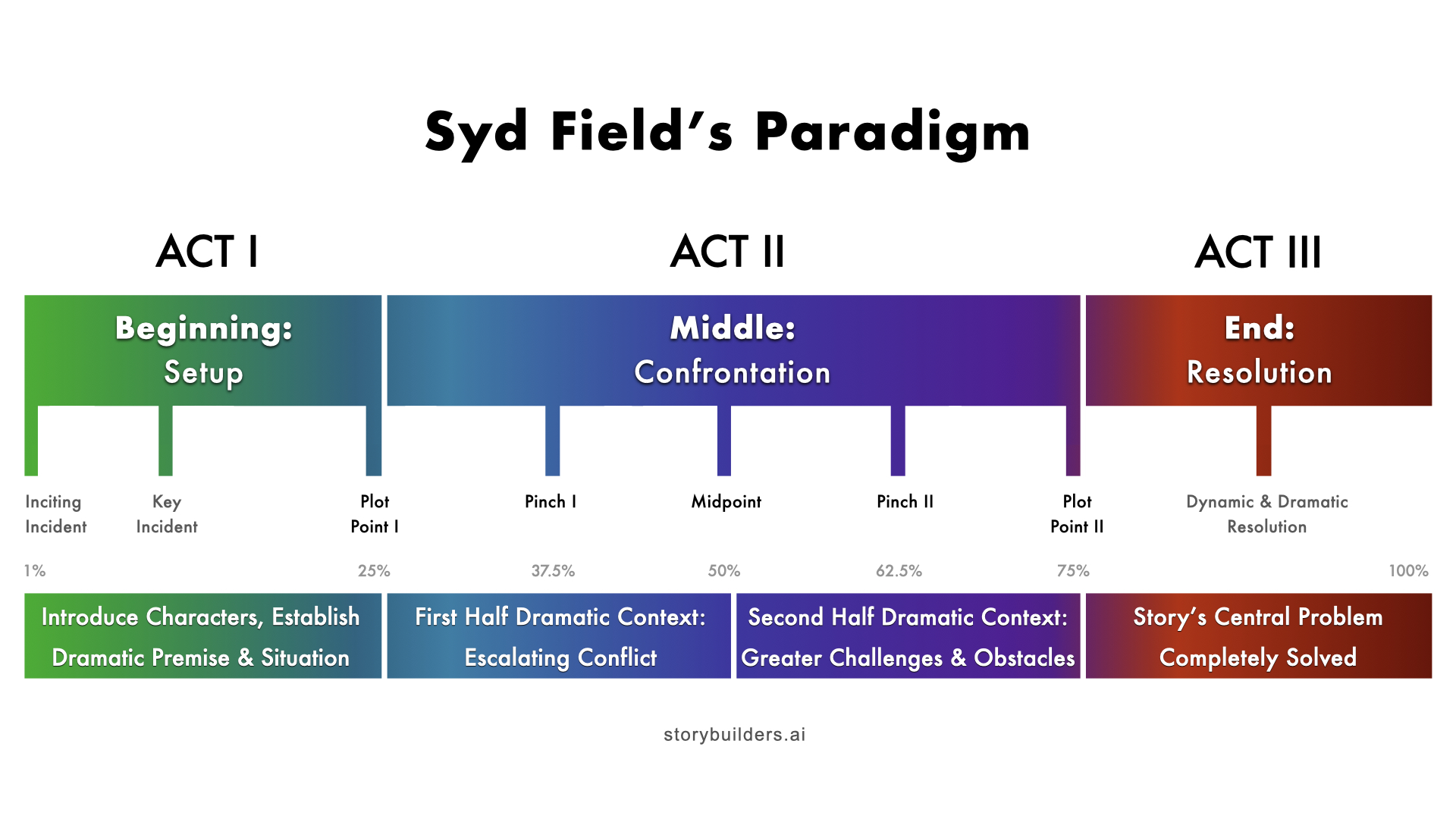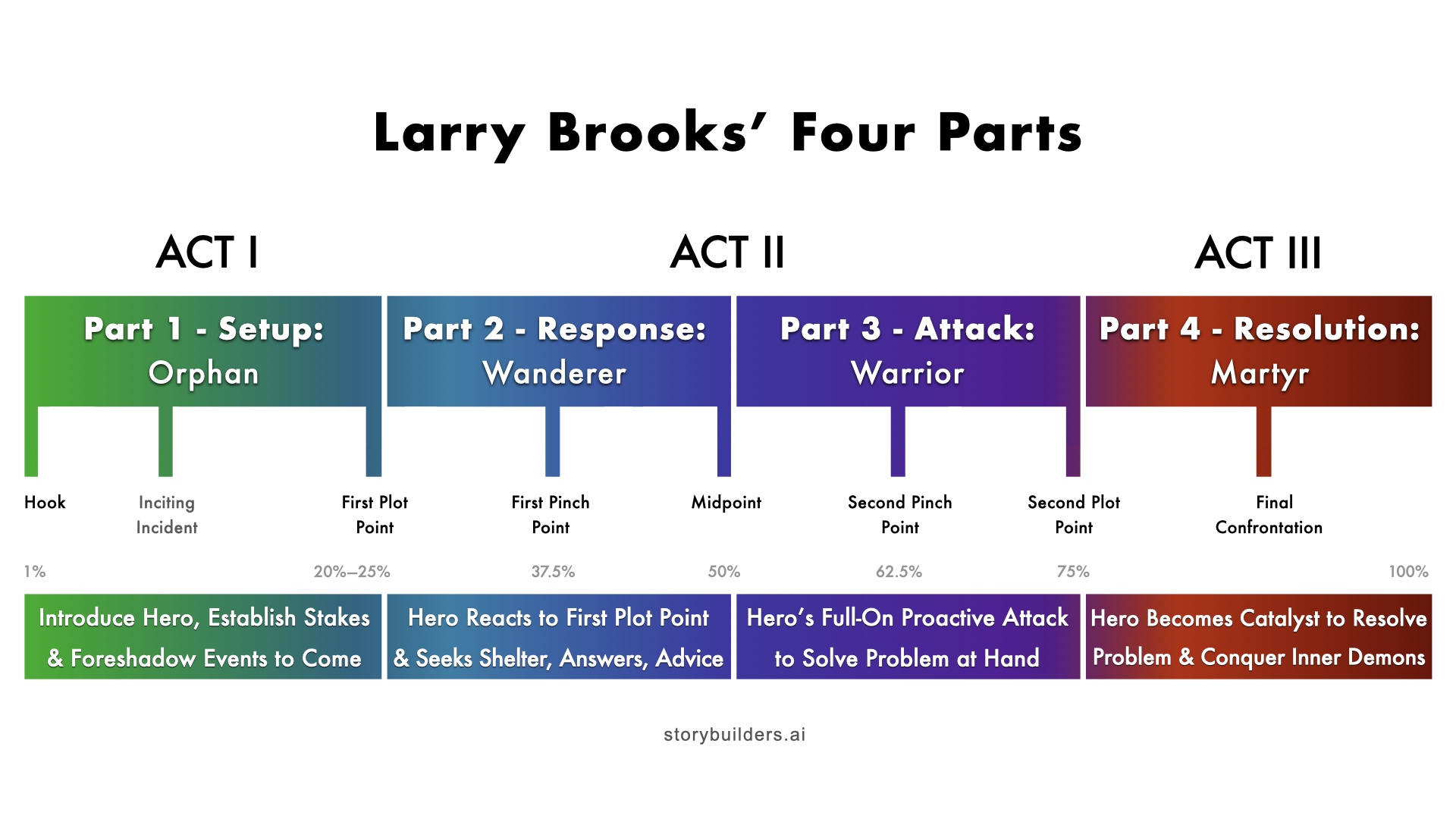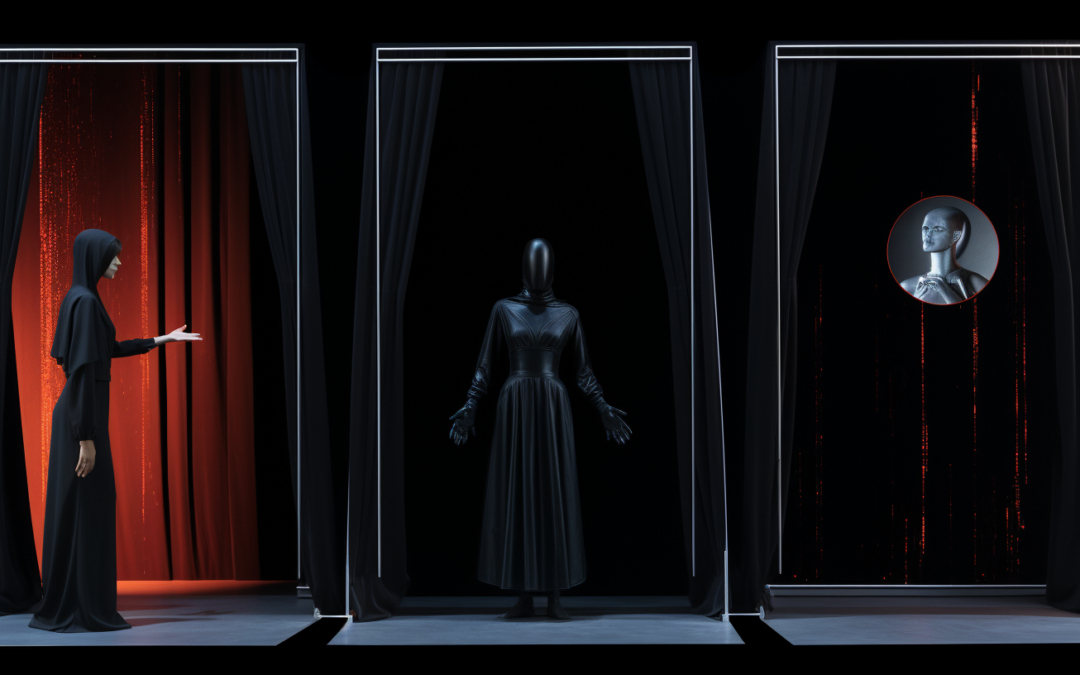Read Time: 5 minutes
Today we’re peeling back the layers of plot architecture.
Think of this as a crash course in the three-act structure where two proven frameworks meet at the drafting table.
So whether you’re a fan of Syd Field’s classic paradigm or Larry Brooks’ four-part model, prepare to leave with a story engineering blueprint tailored for your narrative.
Let’s get started.
1. Syd Field’s Paradigm
Syd Field is often considered the godfather of modern screenwriting. What sets his work apart are two pivotal elements.
First, he emphasizes “plot points” that serve as transitions between each act. Second, he introduces “pinch points” which are moments that ratchet up tension and remind us of the story’s core conflict (main antagonistic forces).
Together, these elements guide the protagonist’s journey, shaping a narrative of rising and falling action.

- Sources: Screenplay: The Foundations of Screenwriting, Newly Revised and Updated by Syd Field, and The Screenwriter’s Workbook: Exercises and Step-by-Step Instructions for Creating a Successful Screenplay, Newly Revised and Updated by Syd Field
1%—25%
ACT I
Beginning: the Setup
ACT I introduces the main characters, and establishes the dramatic premise with a complicated situation.
1%
Inciting Incident (Hook):
Attention-grabbing scene or sequence that sets the story in motion by sparking curiosity or foreshadowing a mirror image of the ending.
10%
Key Incident (optional):
This shifting moment anchors the main character into the storyline and speaks more to what the story is really about. It’s often a foreshadowing to what will happen to the protagonist at Plot Point I.
25%
Plot Point I:
Sets the story in motion by clarifying and launching a central problem that the main character must resolve by the climax.
- Syd Field states in Screenplay that a plot point is “any incident, episode, or event that hooks into the action and spins it around in another direction. In this case, Plot Point I moves the action forward into ACT II…”
26%—75%
ACT II
Middle: the Confrontation
ACT II includes a dramatic context of escalating conflict.
The protagonist is often left rattled by Plot Point I and attempts to find their footing due to their new story goal.
37.5%
Pinch I:
Keeps your story on track by giving the storyline (and protagonist) a “pinch” to keep the action moving forward. Pinch I is most often displayed by having the antagonistic force threaten or impact the protagonist’s chances at reaching their story goal.
50%
Midpoint:
The second half of ACT II begins with the midpoint, a crucial moment that occurs in the middle of the story, usually presenting a major revelation or decision that significantly impacts the protagonist, redefining their objectives and influencing the course of the second half of the narrative.
62.5%
Pinch II:
In The Screenwriter’s Workbook, Field says this is another “little pinch in the storyline that keeps the action on track, moving the story forward either to the Midpoint.” Again this is most often the protagonist facing off against the antagonist force.
75%
Plot Point II:
A dramatic shift for the protagonist to make another meaningful advance toward resolving their overarching story goal. Usually the protagonist learns key information here that helps them see what must be done to resolve their story goal in the final act.
76%—100%
ACT III
End: the Resolution
The end completely resolves the story’s central problem with the main character either achieving or falling short of their story goal.
90%
Dynamic & Dramatic Resolution (Climax):
A key turning point that fits the story by allowing the main character to directly confront the main antagonistic force and resolve the overarching problem in the plot.
2. Larry Brooks’ Four Parts
Larry Brooks’ model reimagines the three-act structure by halving ACT II, creating four distinct parts: Orphan, Wanderer, Warrior, and Martyr.
This 21st-century approach compliments Syd Field’s method, serving as another roadmap for both plot design and character development.

- Sources: Story Engineering: Mastering the 6 Core Competencies of Successful Writing by Larry Brooks, and Story Fix: Transform Your Novel from Broken to Brilliant by Larry Brooks
1%—25%
ACT I
Setup: the Orphan
ACT I introduces the hero, establishes their stakes, and foreshadows the dramatic events to come.
1%
Hook:
Grabs the audience by promising an intense and satisfying experience ahead.
10%
Setup Inciting Incident (optional):
Changes things for the protagonist and injects major story elements, a setup for the huge shift coming at the first plot point.
20-25%
First Plot Point:
Changes everything for the protagonist by launching them on their overarching story goal which must be resolved by the climax around the 90% mark.
26%—50%
ACT II
First half of Act II
Part 2: the Wanderer
The first half of ACT II involves the hero reacting to the first plot point which forced them to leave their status quo life, so they seek shelter, answers, and advice to move forward.
37.5%
First Pinch Point:
The antagonistic force is given a full frontal view so the audience can clearly see the true threat and high-stakes conflict opposing the protagonist from reaching their overarching story goal.
50%
Midpoint:
Facilitates dramatic tension by pulling back the curtain for the protagonist, audience, or both, by revealing new information connected to the protagonist’s overarching story goal.
51%—75%
ACT II
Second half of Act II
Part 3: the Warrior
The second half of ACT II includes the hero’s full-on attack to solve their overarching story goal, still coming up short of its resolution, but aggressive in nature.
62.5%
Second Pinch Point:
The main antagonistic force is once again showcased to display its elevated threat level and expanded power threatening to prevent the protagonist from achieving their overarching story goal.
75%
Second Plot Point:
Increases the stakes and accelerates the pace and tension by revealing a final missing piece essential to the protagonist’s overarching story goal.
76%—100%
ACT III
Resolution: the Martyr
The end completely resolves the protagonist’s central problem launched at the first plot point.
90%
Final Confrontation:
The protagonist’s overarching story goal is determined when they confront the antagonistic force in an epic climax. Their internal and external growth is leveraged to overcome the antagonistic force.
Build Your Blueprint with AI:
Now it’s time to apply these principles to your own story. Use ChatGPT or your chosen AI tool to help you craft your three-act structure.
ChatGPT Prompt:
// edit bold text in [brackets] //
Imagine you are a master storyteller with 20 years of experience developing stories into three-act structures that become bestsellers and blockbusters.
Using a genre of [Insert Genre Here]
and a central story idea of [Insert Story Idea or Summary Here],
let’s construct a vivid three-act structure.
Perform a detailed analysis of the provided genre and story details to expand, enhance, enrich, and elevate it using these fundamental elements:
Act One:
• Setting & Status Quo: Introduce the world, its rules, and the status quo that the protagonist disrupts.
• Conflict & Goals: What primary conflict or dilemma must be confronted? How does this link to the overarching story goal?
• Turning Point: Describe the event that serves as a catalyst, transitioning the story into Act Two.
Act Two:
• Struggle & Transformation: How does the protagonist evolve emotionally and intellectually?
• Antagonist’s Obstacles: Specify the obstacles presented by the antagonist, whether a person, entity, or abstract concept.
• Maturity, Allies & Skills: What internal and external assets does the protagonist gain to confront these obstacles?
• Climactic Buildup: What are the key scenes where the protagonist and antagonist meet in conflict?
Act Three:
• Antagonist’s Culmination: How does the antagonist’s role reach its peak?
• Climax: Describe the ultimate confrontation between the protagonist and antagonist and its significance.
• Resolution: How are all elements and characters brought to a satisfying end?
Additional Layers:
• Emotional Arcs: What are the emotional highs and lows for the characters?
• Thematic Relevance: How does the three-act structure serve the overarching theme of the story?
• Best Moments: Identify key scenes that would make compelling storytelling.
• Time Elements: How does time manipulation or other time-sensitive elements affect the story?
Please generate a tension-raising 3-act structure based on these elements, filled with captivating twists and turns that adhere to this genre and story details.
That’s it for this Saturday.
If you’re finding value in TSS, consider sharing it with a fellow storyteller.
See ya next week!
— Dave

